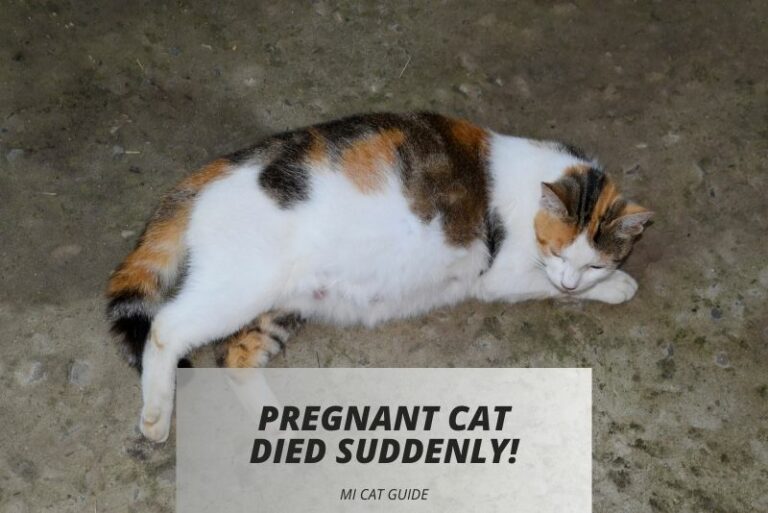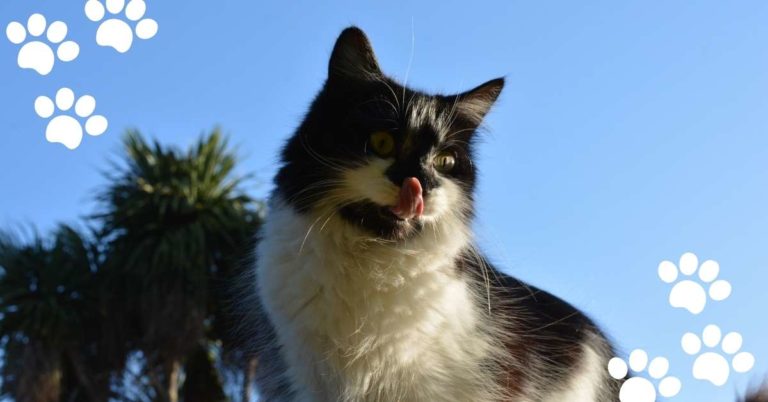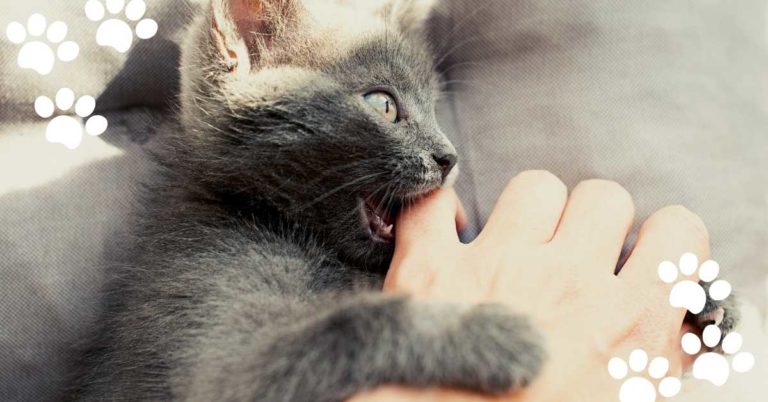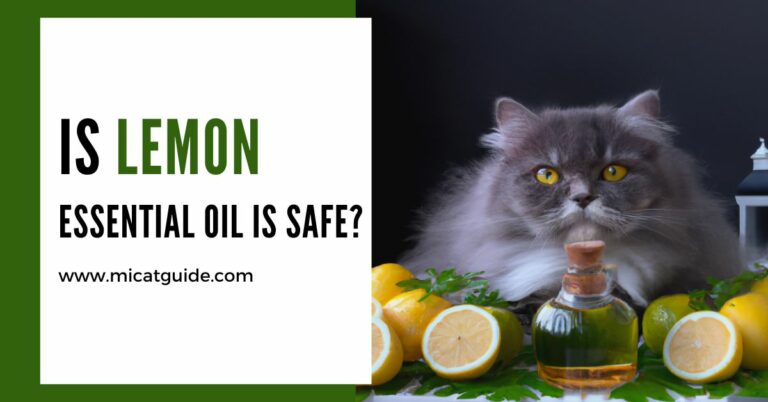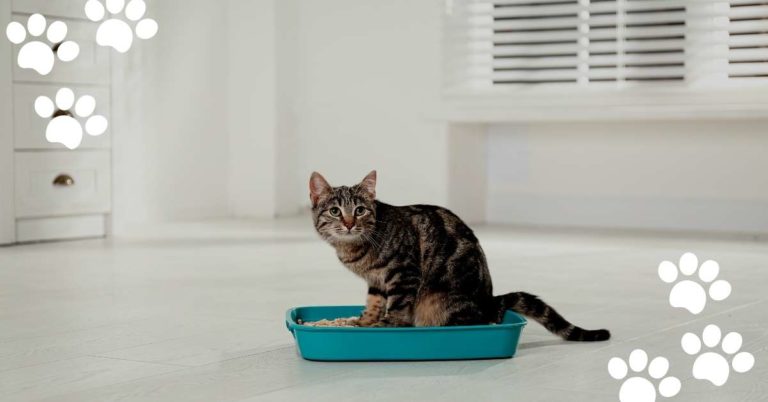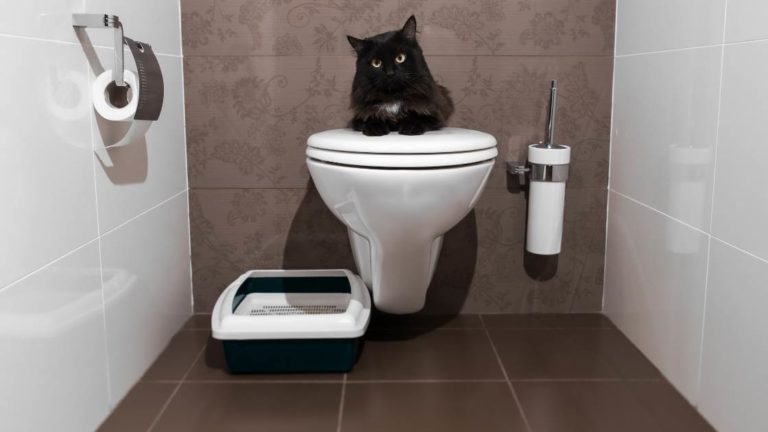Are Amaryllis Poisonous to Cats? (Symptoms…)
Yes, amaryllis plants (Amaryllis spp.) are poisonous to cats as it contains lycorine, an alkaloid toxin that can cause severe reactions if ingested. All parts of the plant, including the leaves, flowers, and bulb, contain toxins that can be harmful to cats if ingested.
Besides, cats may also experience skin irritation if they come into contact with the plant’s sap. In some cases, amaryllis poisoning can even result in death if the cat’s symptoms are not treated immediately.
Here in this blog post, I’ll provide more details on how amaryllis poisoning can occur and what symptoms your cat may display if they have been exposed to the toxins from this plant.
Additionally, I’ll discuss some of the treatments available for cats that have been poisoned by amaryllis. So keep reading to find out more about the poisonous effects of amaryllis on cats.
Different Studies on Amaryllis Positioning to Cats

Cats of all shapes and sizes have been known to nibble on plants around the house, but one of the more controversial among these is the amaryllis. While its beautiful blooms may tempt cats to take a bite, this plant can be highly toxic when ingested. A number of studies have been conducted over the years to investigate its effects and how to best prevent cats from being poisoned.
One of the earliest investigations took place in 1968 when researchers at Iowa State University examined the toxicity of amaryllis in cats. The study concluded that even small amounts could be dangerous, with symptoms such as vomiting, diarrhea, restlessness, depression, and muscle weakness appearing within 24 hours. These findings were published in The Journal of Veterinary Medicine.
More recently, a 2014 study by veterinarians at Cambridge University looked into which parts of the amaryllis are most toxic for cats. They found that different parts could contain varying levels of toxicity—the stem was most toxic, followed by leaves and then flowers—and that there appeared to be no benefits from ingesting them. The team’s results were published in BMC Veterinary Research.
In addition to examining what happens when cats consume amaryllis directly, researchers at Tufts University also studied whether exposure through gardening soil is dangerous too.
Their 2018 study revealed that though there wasn’t enough evidence to definitively state whether the risk exists or not, there is potential for cats to suffer from poisoning after coming into contact with soil containing amaryllis roots or bulbs. This information was documented in Today’s Veterinary Practice.
Though more research is needed on how exactly amaryllis affects cats and what precautions should be taken when they’re around it, it’s clear that extreme caution should be exercised whenever possible.
Also Read: Are Camellias Poisonous to Cats? (Detailed Guide)
Diagnosis of Amaryllis Poisoning to Cats
If your feline has encountered amaryllis, it is absolutely necessary to get them medical aid instantly. If their behavior or physical condition begins to shift, make sure you alert the vet of potential indicators of amaryllis poisoning so they can identify and cure any associated problems right away.
1. Behavioral or Physical Diagnosis
As I said earlier, cats that have consumed amaryllis might display a variety of symptoms. If your cat ingests any part of the amaryllis your cat will see different symptoms within a few minutes or hours. But remember, not every cat will show the same signs as others.
Symptoms of Amaryllis Poisoning to Cats
Cats can potentially suffer from amaryllis poisoning, and the American Society for Prevention of Cruelty to Animals (ASPCA) has identified a few notable warning signs. Such symptoms may include:
| Symptoms | How to Identify? |
|---|---|
| Vomiting | If your cat is vomiting, you may observe the presence of any plant material in the vomit. |
| Diarrhea | Your cat’s stools may become loose and watery as a result of consuming amaryllis. |
| Abdominal Pain | Your cat may display signs of discomfort, such as hunching their back or crying out when touched. |
| Anorexia | It’s possible that your cat will stop eating or may even have a reduced appetite. |
| Muscle Weakness | Your cat may not be able to move as quickly or easily as they usually do, indicating some degree of muscle weakness. |
| Lethargy | Your pet might become more lethargic than usual if they have consumed amaryllis or come into contact with it in another way. |
| Hypersalivation | Your cat may start to salivate more than usual, as this is a common symptom of amaryllis poisoning. |
| Tremors or Seizures | You may observe your cat having trembling or seizure-like activity if they have been exposed to amaryllis. |
2. Medical Diagnosis
If your cat displays any of the symptoms listed above, it’s important to get them checked out by a vet as soon as possible. Here are some of the medical tests your veterinarian may use to diagnose amaryllis poisoning:
a. Physical Examination
Your vet will perform a thorough physical examination of your cat, including checking their vital signs. This will help them determine if there are any other issues that need to be addressed. The physical exam can also help your vet rule out other potential causes of the symptoms.
b. Clinical Chemistry
Your vet may also run tests to check for abnormal levels of certain substances in your cat’s blood or urine. This will help them determine if there is any organ damage as a result of the amaryllis poisoning.
c. Urinalysis
Your vet may also perform a urinalysis to check for any signs of blood or infection in the urine. This can help them identify any additional complications that are related to amaryllis poisoning.
d. X-Rays (Radiographs)
X-rays or radiographs can be used to look for any signs of inflammation, blockage or other issues in the digestive tract. This can help your vet identify any problems that could be related to amaryllis poisoning.
e. Ultrasound Examination
An ultrasound examination can be used to look for any signs of inflammation or blockages in the organs. This can help your vet identify any internal issues that may be related to amaryllis poisoning.
First Aid Treatments for Amaryllis Poisoning to Cats
If you suspect that your cat has been exposed to amaryllis, here are some first-aid treatments you can do until you are able to get them to the vet:
1. Hold Your Cat and Remove any Plant Particles
This is the first and most important step. If you find any pieces of the amaryllis plant in your cat’s mouth, use a pair of tweezers to carefully remove them. But be careful not to put yourself in any danger of being scratched or bitten.
To ensure the safe and injury-free removal of plant particles, here I’ll provide you with a few simple steps:
2. Rinse Your Cat’s Mouth
Once the plant particles have been removed, rinse your cat’s mouth with lukewarm water to prevent any further absorption of amaryllis toxins. Besides, this will also help in cleaning away any residual plant material.
Here are the steps you need to take:
3. Make Sure Your Cat Is in a Safe Place
You should make sure that your cat is in a safe and quiet place where they can rest and recover. Make sure to keep them away from any other pets or children and ensure that they have access to fresh water.
Here are a few tips for creating a safe and comfortable space for your cat:
4. Call Your Vet
After you’ve taken the initial first aid steps, you should call your vet right away. Explain the situation to them and ask for advice on how to proceed with treatment. Depending on your cat’s condition, they may advise you to bring your pet in for immediate medical care or provide you with advice on how to proceed at home.
Veterinary Treatments for Amaryllis Poisoning in Cats
After your successful first aid treatments and calling the vet, chances are that your cat will need further medical care from a veterinarian. Depending on the severity of their condition, they may recommend one or a combination of the following treatments:
1. IV Fluids
IV fluids may be necessary to help flush out any toxins that may have been absorbed by your cat’s body. This will help to reduce any inflammation and improve their overall condition.
For successful administration of IV fluids, here are the steps your vet should take:
2. Decontamination
Decontamination is the process of eliminating or reducing toxins in your pet’s body. Your vet may use activated charcoal to bind any remaining toxins in your cat’s digestive system and help them pass out of the body.
Here’s a glimpse of the decontamination process:
3. Antidotes or Medications
Depending on the severity of your cat’s condition, your vet may recommend one or more medications or antidotes to help reduce the impact of amaryllis poisoning.
The most common medications used in such cases include:
| Medicines | Dosage | Purpose |
|---|---|---|
| Atropine | 0.01 to 0.04 mg/kg body weight | To reduce the effects of nausea, vomiting and abdominal pain |
| Lorazepam | 0.1 mg/kg body weight | To reduce anxiety and seizures |
| Naloxone | 0.002 mg/kg body weight | To reduce the effects of respiratory depression |
*** These medications may also be supplemented with other treatments such as oxygen therapy and supplemental fluids.
Attention: Never administer any medications to your pet without consulting a vet. This article is merely informational, and not meant as medical advice. If you have any concerns about the health of your pet, please consult with a veterinarian immediately!
4. Emergency Surgery (for Life-Threatening Conditions)
In some cases, emergency surgery may be necessary to save the life of your pet. This could involve performing emergency surgery to remove a foreign object that has been ingested, or to repair a serious injury.
The type of surgery needed will depend on the condition of your pet and the cause of their illness or injury. Your veterinarian will be able to provide more information on the possible surgeries that may be needed.
Once again, it is important to note that emergency surgery should always be performed by a qualified veterinarian and never attempted at home.
Recovery Stages for Amaryllis Poisoning to Cats
It is important for pet owners to be aware of the recovery stages after any type of surgery or serious illness. Depending on the severity, pets may require additional medical attention and monitoring throughout their recovery period.
Here are the typical recovery stages that cats may experience after amaryllis poisoning:
1. Stabilization (at the vet)
During this initial stage, the vet will carefully monitor and stabilize your pet’s vital signs. This may include administering intravenous fluids, oxygen therapy, and other medications to keep your pet comfortable.
Here, the vet will also assess for any further complications that may have arisen from amaryllis poisoning.
2. At-Home Care (careful monitoring)
Once the vet has determined your pet is stable and ready to go home, they may provide you with instructions on how to continue caring for your pet at home.
This could include administering medications, monitoring vital signs, and providing a calm environment to ensure the best recovery possible.
3. Long-Term Care (following up with the vet)
For some cats, there may be long-term effects of amaryllis poisoning that require further monitoring. It is important to follow up with the vet regarding any ongoing concerns and signs of illness.
This may include periodic blood tests, X-rays, and physical examinations to ensure your pet’s continued health.
How to Prevent Amaryllis Poisoning to Cats?
Now that you know more about the signs, diagnosis, and recovery stages of amaryllis poisoning in cats – it may be helpful to learn how to prevent this condition.
Here are some tips to help prevent amaryllis poisoning in cats:
1. Avoid Exposing Cats to Amaryllis Plants
The number one way to prevent amaryllis poisoning in cats is to avoid exposing them in the first place. Do not allow your cats access to amaryllis plants, bulbs, or flowers in your home.
Here are some useful strategies to keep cats away from these plants:
2. Use Bitter-tasting Sprays or Herbal Repellents
If you have cats that are persistent in trying to access amaryllis plants, then you may consider using a bitter-tasting spray or herbal repellent to deter them.
These products can be applied directly onto the plant and will discourage cats from chewing or licking it.
Here is how to apply these products safely:
3. Provide an Alternative Stimulation Source
Cats are naturally curious creatures and may tap into their inquisitive nature by exploring plants. To minimize the risk of amaryllis poisoning, it is important to provide cats with an alternative means of stimulation and playtime.
This may include providing interactive toys, puzzle feeders, cat furniture or scratching posts, or playing with your cat (e.g. laser pointer games).
To keep your cats entertained and engaged, here are some ideas to create a stimulating environment:
4. Train Cat’s to Avoid the Plants
Finally, if your cats still insist on exploring and chewing the amaryllis plants, then you may need to provide additional training.
By providing positive reinforcement and consistent rewards, you can train cats to avoid the amaryllis plants.
Here are some tips to help you train your cat:
My Final Thoughts on Amaryllis Poisoning to Cats
Amaryllis poisoning in cats is an important issue to be aware of, as it can cause serious health complications.
By following the above tips and strategies, you can help reduce your cat’s risk of amaryllis poisoning and ensure they stay safe and healthy.
If you think your cat may have been poisoned by amaryllis, then it is important to seek veterinary care immediately.
Your veterinarian will be able to assess the situation and provide the necessary treatment for your cat.
With prompt action and proper care, cats can have a full recovery from amaryllis poisoning. Thank you for reading!

